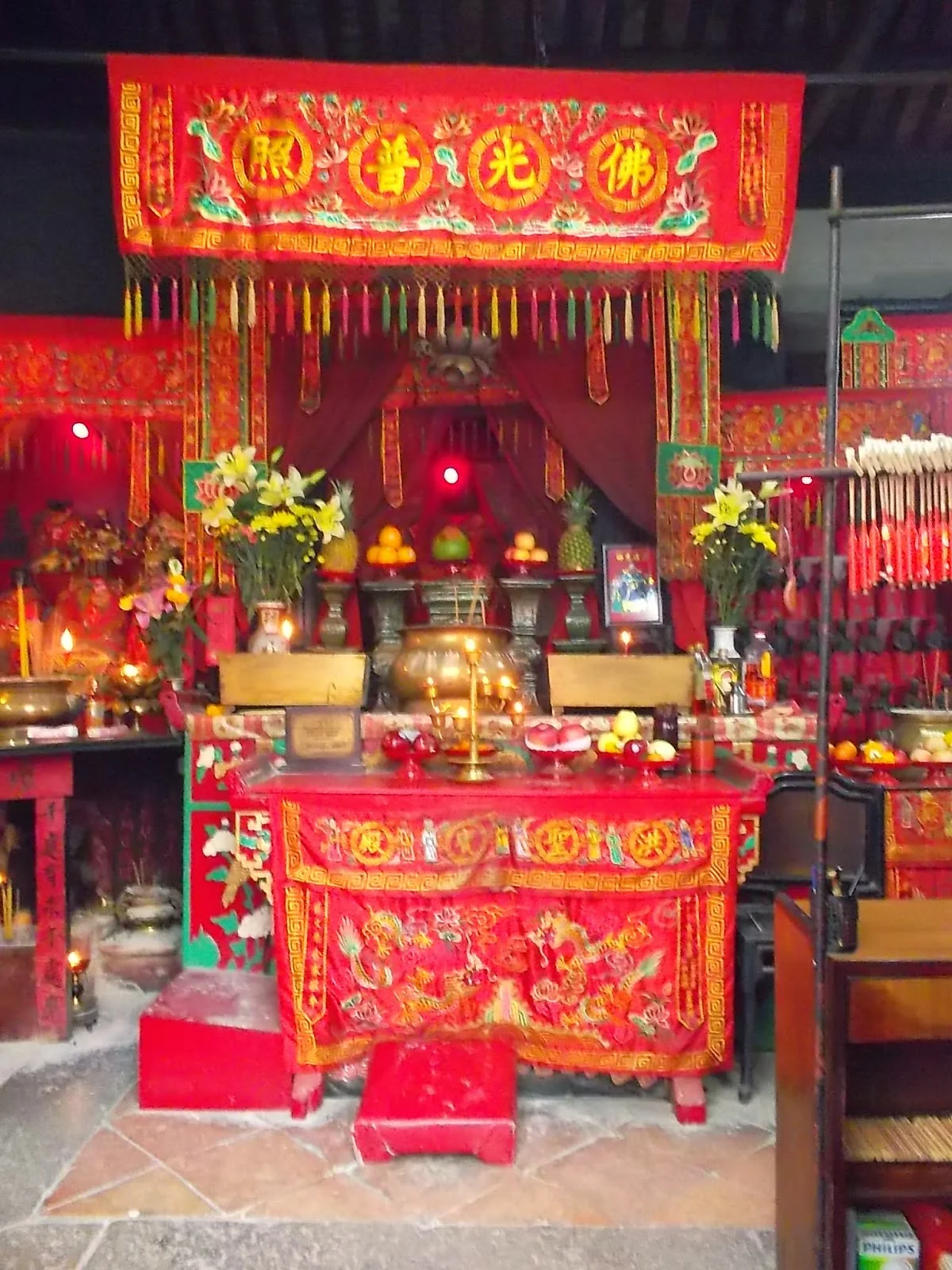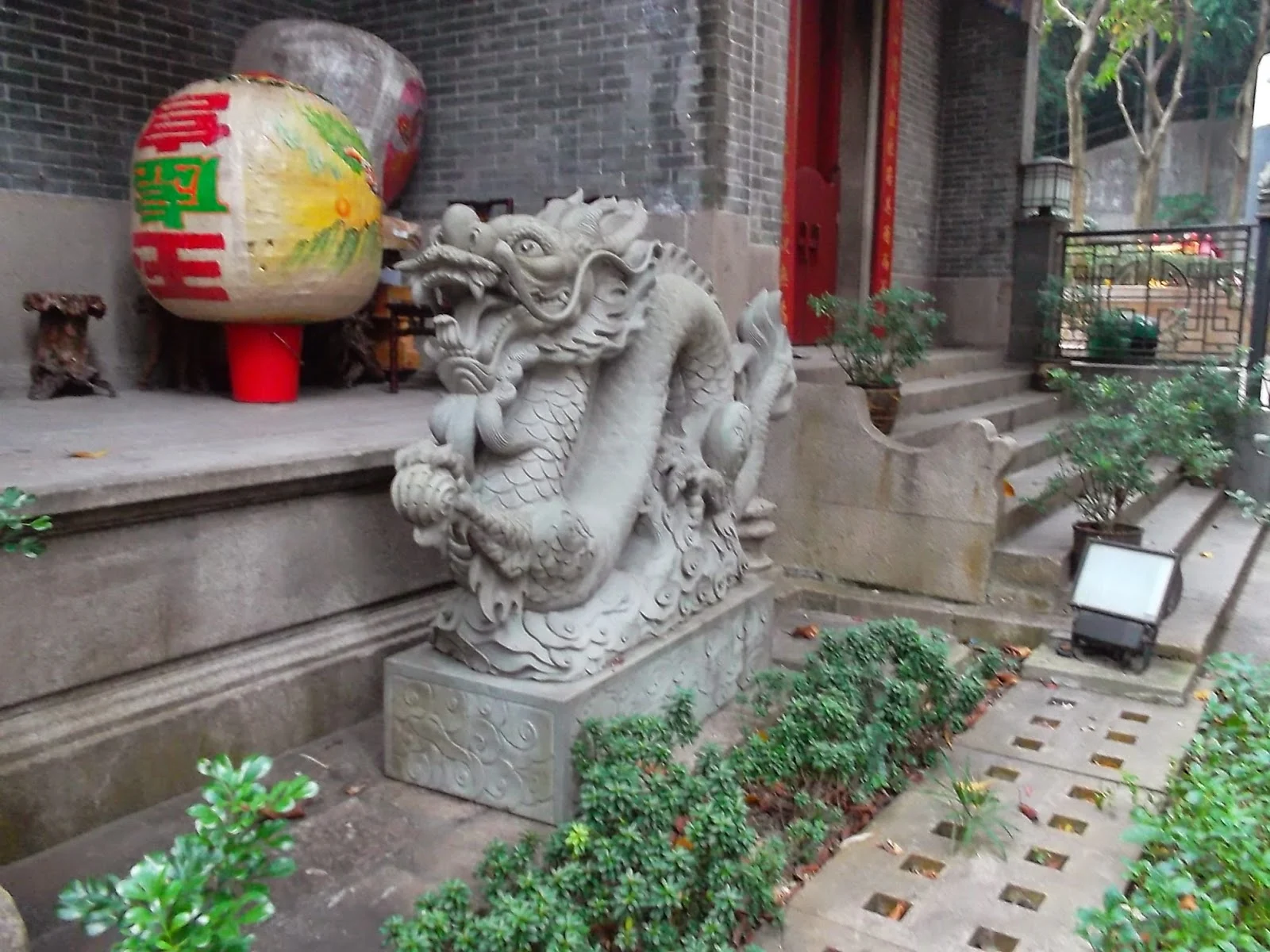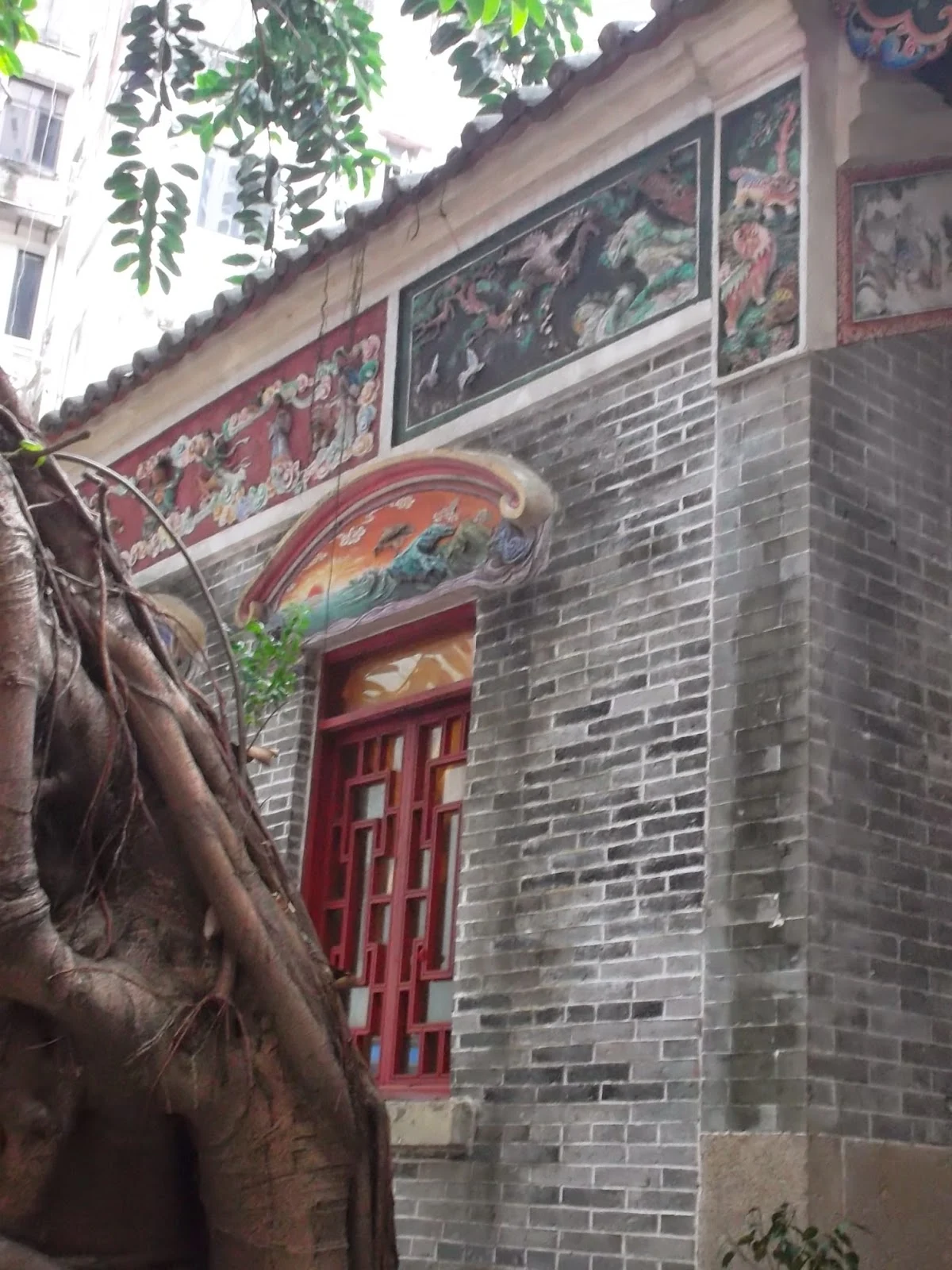A Walk in Hong Kong's Wan Chai District: Old Post Office, Blue House, Hung Shing Temple, and Pak Tai Temple
Yesterday I had lunch with a friend of mine at a Thai restaurant in Central. After we finished our meal my friend went back to work. Since the weather was quite pleasant that day, I decided to take a walk to Tin Hau.
During my walk I took a few pictures of some interesting old buildings in Wan Chai District. Surrounded by modern skyscrapers, these old structures are among the few ones that have withstood the urban development frenzy of the post-war era.
Wan Chai
In the morning of 26 January 1841 Sir James Bremer of the British Royal Navy, accompanied by army officers and Royal Marines, landed on the north-west part of Hong Kong, a spot that came to be known as Possession Point (which is now the site of the Hong Kong-Macau Ferry Terminal). He toasted Queen Victoria and took formal possession of the small island in her name. Hong Kong had been ceded to the British by the Qing Empire during the First Opium War. London secured the naval base through the Convention of Chuanbi and later through the Treaty of Nanjing (29 August 1842).
Hong Kong had a population of just 7,500 Chinese, mostly fishermen and farmers (Steve Tsang: Modern History of Hong Kong, A: 1841-1997, 2011, p. 16). Foreign Secretary Lord Palmerston dismissed the newly acquired colony as "a barren island with hardly a house upon it" (ibid., p. 14). Hardly anyone at that time could have imagined that Hong Kong would become one of the world's greatest metropolises.
Once the British had occupied Hong Kong island they set about the task of developing it and building a replica of a European city on Asian soil. They first founded the city of Victoria, which was deemed the capital of Hong Kong until the 1997 handover. Victoria largely corresponds to present-day Central District.
Over the next decades thousands of mainland Chinese flocked to the British colony, which offered refuge from the Qing Empire's deteriorating economic and social conditions. As the Taiping Rebellion ravaged China, scores of mainlanders moved to Hong Kong, which by the early 1860s had already reached a population of about 120,000 (R.S. Chaurasia: History of Modern China, 2004, p. 326).
Plans to develop new areas outside of Victoria began already in the 1840s. At that time, Wan Chai, which was adjacent to Victoria, was sparsely populated and its inhabitants were chiefly Chinese fishermen (Michael Ingham: Hong Kong: A Cultural History, 2007, p. 59). In the 19th century, present-day Queen's Road East was Wan Chai's coastline.
2007, p. 59). In the 19th century, present-day Queen's Road East was Wan Chai's coastline.
The colonial government originally planned to turn Wan Chai into a high-class European settlement and commercial district. Western-style buildings began to be constructed around Stone Nullah Lane and the surrounding hills (Jason Wordie: Streets: Exploring Hong Kong Island, p. 102). But the plan never really took off because Wan Chai was cut off from Victoria by the naval barracks and docks which were located in present-day Admiralty.
Instead, Wan Chai became an area of Chinese settlement and an 'entertainment district' for off-duty sailors and officers, who at the turn of the 20th century had been banned from the more respectable Victoria city (Po Hung Cheng: A Century of Hong Kong Island Roads and Streets , 2001, p. 70; Ingham 2007, p. 59).
, 2001, p. 70; Ingham 2007, p. 59).
In order to solve the issue of land scarcity, the British colonial government undertook a series of land reclamations. If there hadn't been these land reclamations, Wan Chai would look completely different today. Land reclamation projects in Wan Chai were carried out in the 1880s, 1920s, 1960s and 1970s. Up until the 1920s, present-day Johnston Road was still the waterfront.
In the 1920s, a major land reclamation project was commenced, and Morrison Hill was flattened to provide earth for it. Hennessy Road and Gloucester Road were built on reclaimed land. After World War II, more land was reclaimed, and new, controversial reclamation projects are underway.
Evolution of land reclamation in Wan Chai from the 1840s to the present (source: Wikipedia) |
Wan Chai remains 'split' between the area south of Gloucester Road, with its more or less disreputable 'girl bars' and pubs frequented by tourists and expats, with its old buildings and traditional Chinese markets; and the section north of Gloucester Road, with its futuristic government buildings (Wordie, p. 103; Ingham 2007, pp. 65-66).
Hung Shing Temple
Hung Shing Temple (洪聖古廟), also called Tai Wong Temple, is the first temple to have been built in British Hong Kong. Its construction, initiated by the local Chinese fishermen community, began in 1847 and was completed in the 1860s. The temple was built on the site of a preexisting small shrine set up by the local residents inside a rock to worship the 'Ruler of the Sea' (Ingham 2007, p. 66).
 |
| Hung Shing Temple |
Stone Nullah Lane, Blue House
Stone Nullah Lane (石水渠街, literally: 'Stone canal street') is one of Wan Chai's oldest streets. The unusual word 'nullah' is "an Anglo-Indian word that means a stone- or concrete-revetted drainage channel". The old drainage channel has long disappeared, and only its name reminds of its past existence.
 |
| The Blue House |
On the left side of Stone Nullah Lane one can see the so-called 'Blue House', a characteristic tenement house constructed in the 1920s in Tong Lau style; this was a typical residential and commercial architecture of the late 19th and early 20th century which blended Western and Chinese features and was widespread in Hong Kong, Macau, and in areas of mainland China with strong foreign presence. The Blue House is one of the last tenements of its kind in Hong Kong. The majority of these Tong Lau edifices have been torn down and replaced by modern high-rise complexes that can accommodate more people and have more facilities. The Blue House, for instance, doesn't have a lift or built-in toilets, so that the residents have to resort to public restrooms.
Pak Tai Temple
Climbing up Stone Nullah Lane you will find a fairly large temple, called Pak Tai Temple (北帝廟, literally: 'Temple of the Emperor of the North'). As most Chinese temples, this one, too, hosts a number of different gods and deities. The most important of them is Pak Tai (or Beidi, in Mandarin), the Daoist god of water and wealth. The statue displayed inside the temple dates back to the Ming dynasty, though it isn't clear how it got there (Ingham 2007, p. 68).
Pak Tai is an important god of the Daoist pantheon. As with most Daoist gods, Pak Tai, too, is said to have been a man who, by his worthy actions, was admitted to the ranks of Heaven. Many diverging legends exist as to Pak Tai's earthly life before his deification. One of them goes as follows:
There was a pig butcher who realised the evil nature of his profession. He repented and became a hermit. He meditated and did his utmost to atone his misdeeds, but nothing was enough for him to make up for the crime of killing so many animals.
Desperate, he disembowelled himself and threw his entrails into the sea. By doing so, his good and evil parts were separated. His spirit ('shen') was admitted to Heaven, while his ghost ('gui') turned into two demons: a tortoise and a snake, who began to ravage the earth. When the 'shen' saw that the ghosts he had generated were harming the people, he returned to the earth and subdued them. He then transformed them into two stars which he controlled from his own place in the North Star.
Pak Tai's title is 'Dark Heavens, Superior Ruler', and he is thus associated with the 'Superior Ruler' (Shangdi), the invisible principle of the universe (see Jonathan Chamberlain: Chinese Gods: An Introduction to Chinese Folk Religion, 2010, pp. 90-91).
Pak Tai's title is 'Dark Heavens, Superior Ruler', and he is thus associated with the 'Superior Ruler' (Shangdi), the invisible principle of the universe (see Jonathan Chamberlain: Chinese Gods: An Introduction to Chinese Folk Religion, 2010, pp. 90-91).
 |
| This nice cat kept following me and sat down next to my feet whenever I stopped to take pictures. |
Old Wan Chai Post Office
Among the tall and modern buildings of Queen's Road East, one small, white structure stands out, one of the last old edifices that have survived the mass demolitions of the post-war decades. It is the Old Wan Chai Post Office, built in 1915, which was Wan Chai's post office until 1991 and now houses the district's Environmental Resource Centre.
The post office is in many respects a modest building. Its uniqueness lies in the mix of Western and Chinese styles; for instance, the rooftop is built in the traditional local fashion, with the characteristically curved tiles which could be found in any Chinese country house (Wordie, pp. 129-130). The old post office conveys a feeling and atmosphere of the prewar Hong Kong which is now lost.
































Comments
Post a Comment